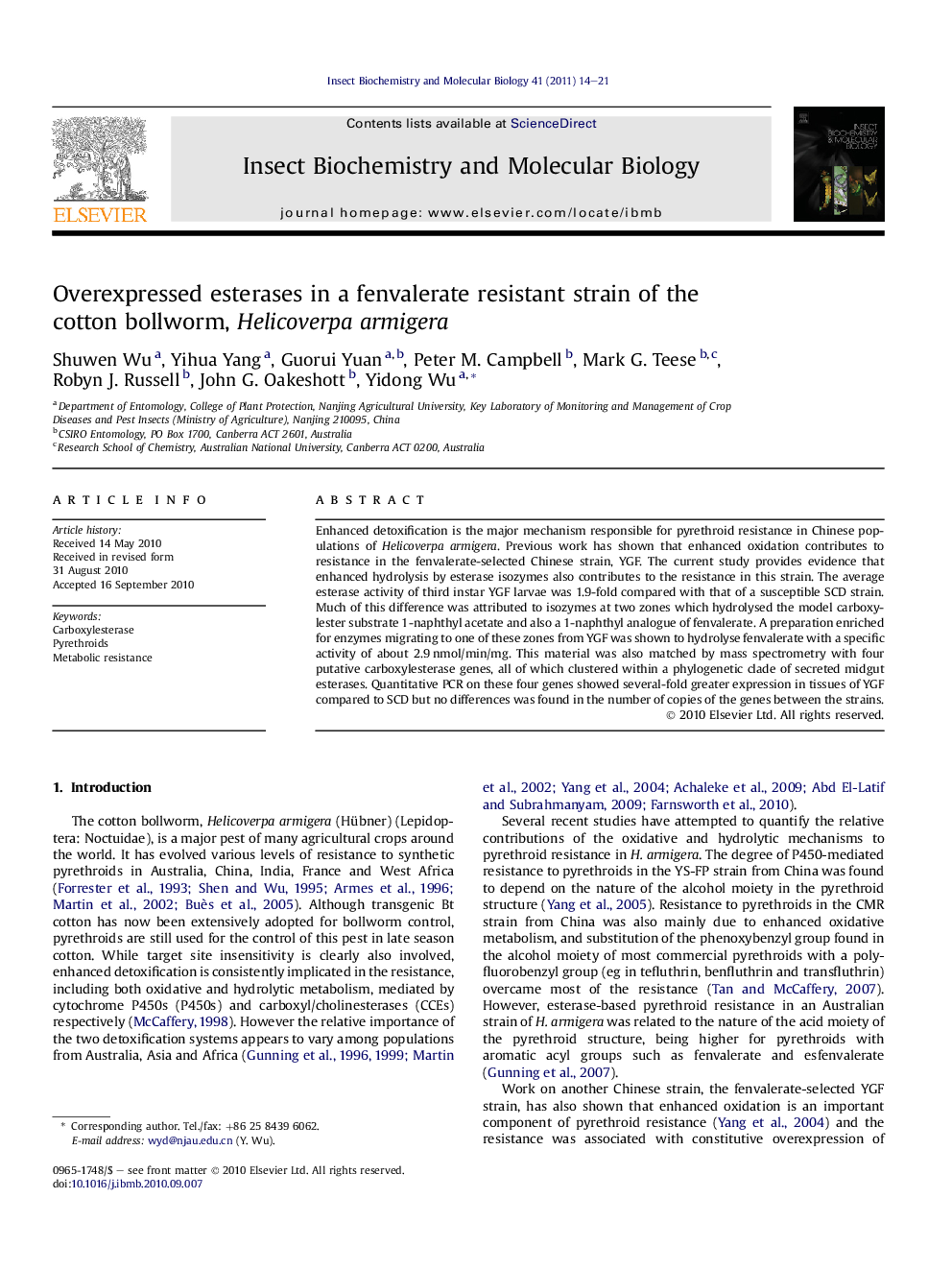| Article ID | Journal | Published Year | Pages | File Type |
|---|---|---|---|---|
| 1982443 | Insect Biochemistry and Molecular Biology | 2011 | 8 Pages |
Enhanced detoxification is the major mechanism responsible for pyrethroid resistance in Chinese populations of Helicoverpa armigera. Previous work has shown that enhanced oxidation contributes to resistance in the fenvalerate-selected Chinese strain, YGF. The current study provides evidence that enhanced hydrolysis by esterase isozymes also contributes to the resistance in this strain. The average esterase activity of third instar YGF larvae was 1.9-fold compared with that of a susceptible SCD strain. Much of this difference was attributed to isozymes at two zones which hydrolysed the model carboxylester substrate 1-naphthyl acetate and also a 1-naphthyl analogue of fenvalerate. A preparation enriched for enzymes migrating to one of these zones from YGF was shown to hydrolyse fenvalerate with a specific activity of about 2.9 nmol/min/mg. This material was also matched by mass spectrometry with four putative carboxylesterase genes, all of which clustered within a phylogenetic clade of secreted midgut esterases. Quantitative PCR on these four genes showed several-fold greater expression in tissues of YGF compared to SCD but no differences was found in the number of copies of the genes between the strains.
Graphical abstractFigure optionsDownload full-size imageDownload high-quality image (117 K)Download as PowerPoint slideResearch highlights► Elevated levels of several esterase isozymes in a fenvalerate resistant strain. Some of these isozymes can hydrolyse fenvalerate, albeit slowly. Mass spectrometry on tryptic peptides identifies genes encoding four of these. These four genes are overexpressed in the resistant strain. But the copy number of these genes is the same as in a susceptible strain.
